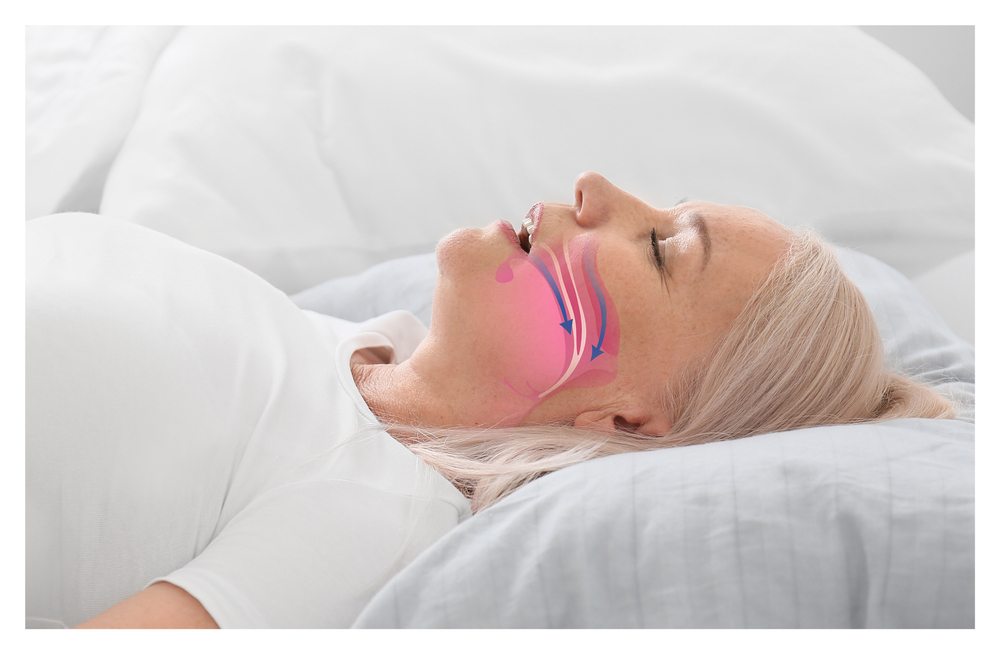
Today’s sleep apnea mouthpiece is a custom-fitted dental device meticulously designed to maintain an open airway while you sleep. It combats Obstructive Sleep Apnea (OSA), the most common form of the disorder, by strategically repositioning your jaw or tongue. This ensures a consistent flow of oxygen throughout the night, preventing the disruptive pauses in breathing that characterize OSA.
The effectiveness of these devices lies in their ingenious simplicity. By gently pulling your lower jaw or tongue forward, they prevent the collapse of soft tissues in your throat that would otherwise obstruct your airway. This strategic positioning, akin to techniques employed in CPR, creates a clear passage for air, allowing you to breathe freely and deeply throughout the night.
Navigating the world of sleep apnea mouth guards begins with understanding the diverse array of options available. The most prevalent type, Mandibular Advancement Devices (MADs), function by securing to your teeth and subtly shifting your lower jaw forward. This repositioning pulls your tongue away from the airway, effectively preventing obstruction. MADs are further categorized into one-piece and two-piece designs, with the latter offering enhanced adjustability and comfort for a truly personalized fit.
For those who may not be ideal candidates for MADs, such as individuals with weaker teeth, Tongue Retaining Devices (TRDs) provide a viable alternative. These devices utilize gentle suction to hold the tongue in a forward position, preventing it from falling back and obstructing the airway.
Beyond these two primary types, the field of sleep apnea treatment is constantly evolving, with newer devices like Rapid Maxillary Expansion (RME) devices, tongue muscle stimulation devices, and soft palate lifters emerging to address specific needs and patient profiles. RME devices focus on widening the upper jaw, making them particularly relevant in treating children with sleep apnea. Tongue muscle stimulation devices employ electrical impulses to strengthen the tongue and maintain an open airway.
Benefits of a Sleep Apnea Mouthpiece
Any sleep apnea mouthpiece usually offers a compelling array of benefits. It improves OSA symptoms, reducing daytime sleepiness and concentration difficulties, and can lead to a significant reduction in snoring, benefiting both the user and their sleep partner. Moreover, it enhances sleep quality, promoting deeper and more restorative sleep.
Their convenience is unmatched – small and portable, they are ideal for travel. As a non-invasive alternative to surgery, they offer a comfortable path to better sleep. Unlike CPAP machines, they operate silently, and many individuals find them easier to use consistently than CPAP. Oral appliances for sleep apnea can even be used in conjunction with CPAP therapy, potentially reducing the required air pressure. Additionally, they can serve as night guards, offering relief for those who grind their teeth.
Some users may experience temporary side effects like jaw pain, tooth movement, dry mouth, or gum irritation/ It’s important to recognize that these devices are not suitable for everyone, particularly those with central sleep apnea or severe OSA. While effective, CPAP generally remains the gold standard for OSA treatment. The cost of custom-fitted devices can be a significant factor to consider.
Embracing Innovation and Making Informed Decisions
The modern sleep apnea mouthpiece landscape is dynamic, with ongoing innovations pushing the boundaries of treatment. The Vivos System, for example, represents a groundbreaking approach that aims to correct the root causes of OSA by addressing structural issues in the mouth and jaw. This system combines oral appliances with specialized exercises to reshape the airway, potentially offering a long-term solution.
Advancements in materials, such as the use of medical-grade polymers and 3D printing technology, are revolutionizing mouthpiece design, leading to increased comfort, durability, and customization. Looking ahead, smart technology integration holds the promise of devices equipped with sensors to track usage and effectiveness, providing real-time data for personalized treatment adjustments.
If you’re considering sleep apnea mouthpieces, knowledge is your most valuable tool. Understand the factors influencing cost, including the type of device and level of customization. Consult a qualified specialist, sleep specialist, doctor, or pain management specialist to determine the most suitable option for your specific needs. In addition, do plenty of reading on best sleep apnea mouthpiece reviews.
Be aware that custom-fitted devices typically require a prescription. Regular dental check-ups are essential to assess the condition of your device and determine when replacement is necessary. It’s also crucial to have realistic expectations, recognizing that while mouthpieces significantly improve symptoms, they may not completely cure sleep apnea.
Fortunately, sleep apnea mouth guard designs are deeply rooted in scientific principles aimed at optimizing airway configuration. Mandibular advancement, the primary mechanism employed by many devices, enlarges the upper airway, particularly in the lateral dimension, by influencing tissue movement. Ongoing research and development continue to refine these devices, enhancing their comfort, effectiveness, and long-term benefits.
Tips for Optimal Sleep Apnea Mouthpiece Usage
- Maintaining impeccable hygiene is paramount if you start using a sleep apnea mouthpiece. Clean your mouthpiece daily and brush your teeth before wearing it to prevent food particles from becoming trapped. Store your device in its case when not in use.
- When starting with a new mouthpiece, allow for a gradual adjustment period, starting with shorter wear times and gradually increasing duration as your mouth and jaw adapt. Be prepared for potential side effects and consult your doctor or pain management specialist if they persist. Establishing a consistent sleep routine can significantly enhance treatment effectiveness.
- Millions of Americans grapple with the challenges of sleep apnea, a disorder that disrupts breathing during sleep and casts a long shadow over their waking hours. If you’re one of them, seeking a non-invasive, effective, oral appliance for sleep apnea solution should be your top priority. It can help you reclaim your restful nights.
- Overall, this ingenious invention stands as a testament to innovation in the realm of sleep disorder treatment. It offers a convenient and often highly effective solution for individuals seeking to overcome the challenges of OSA. By understanding the various types, benefits, drawbacks, and the science underpinning their design, you can embark on a journey toward restful, uninterrupted sleep.










